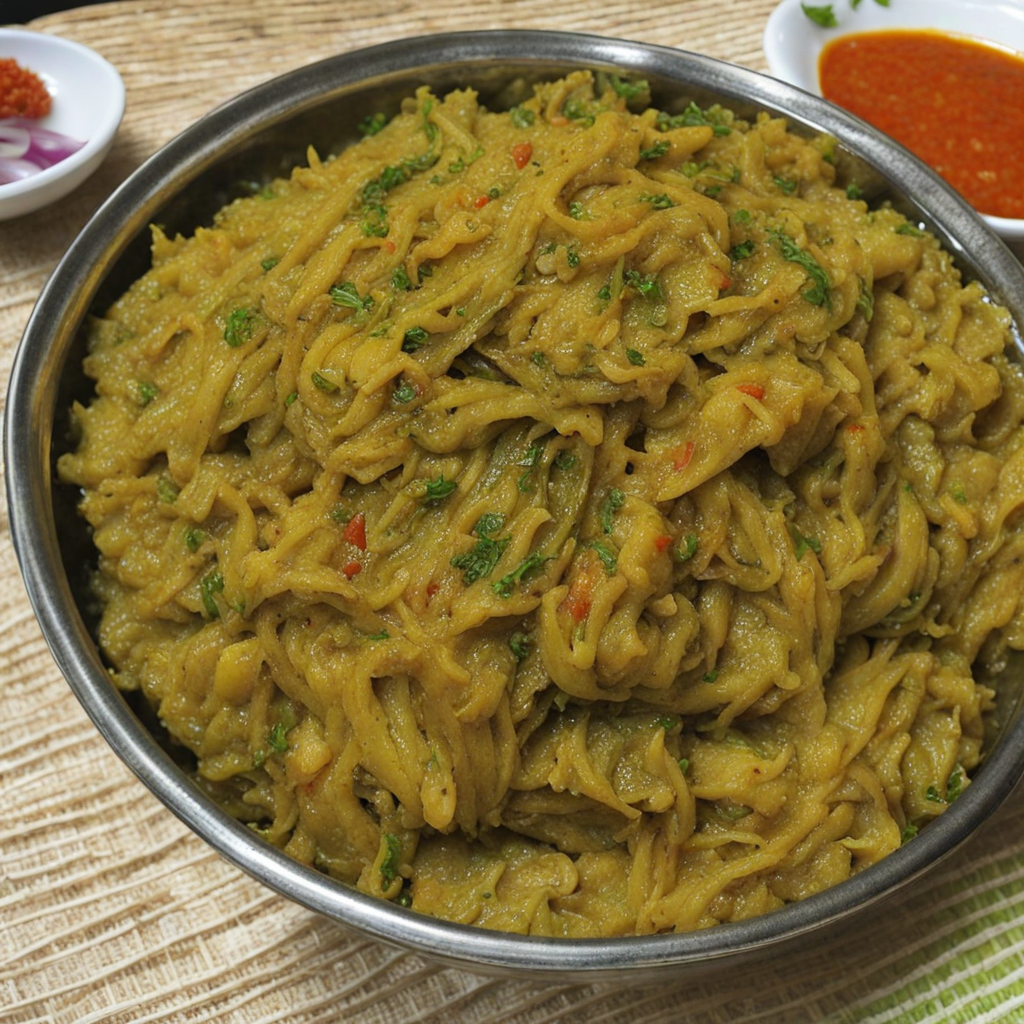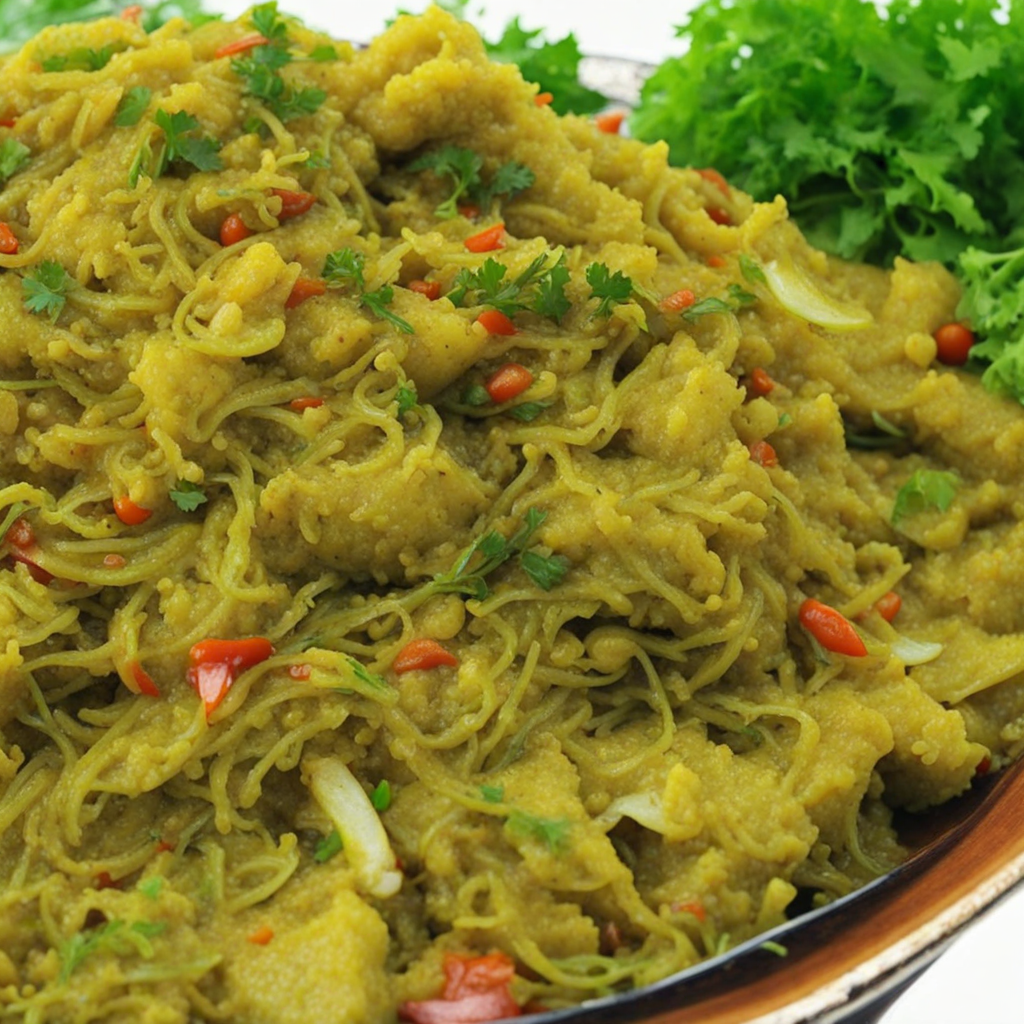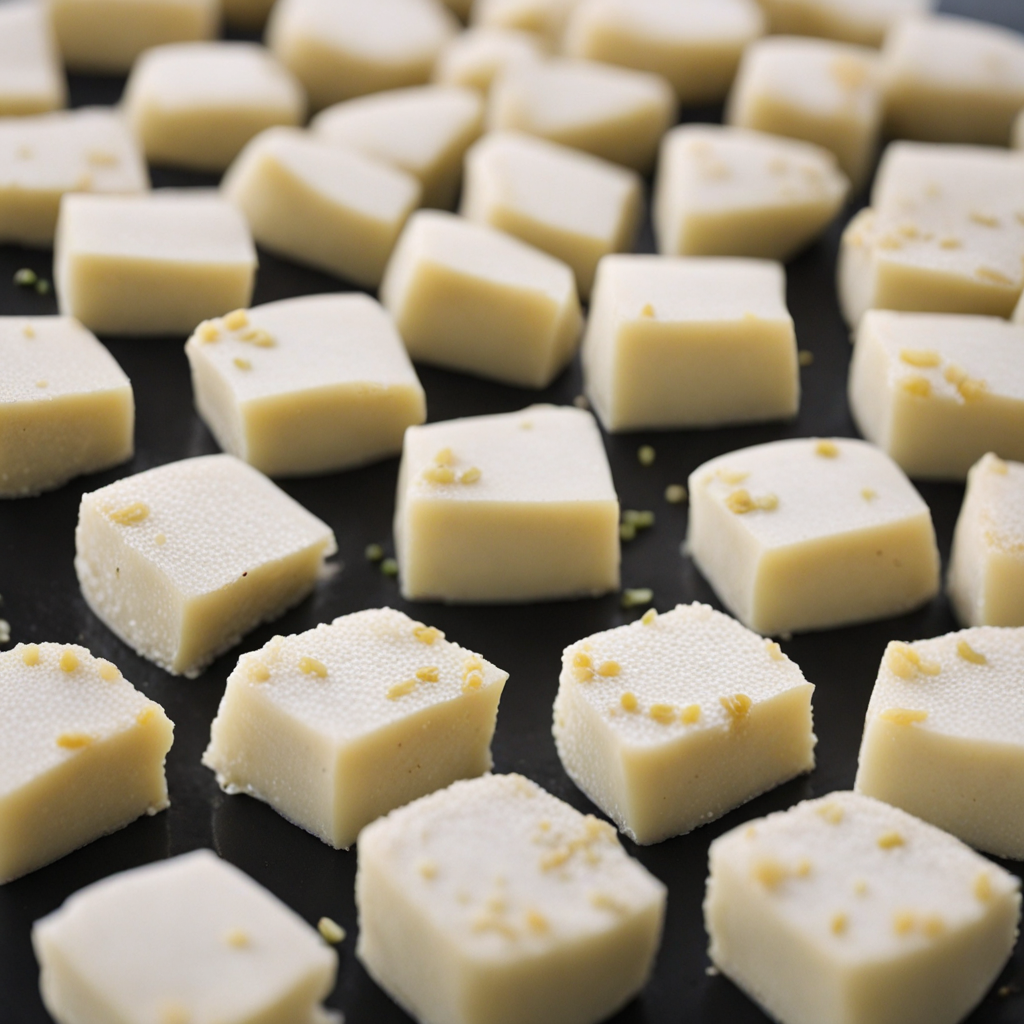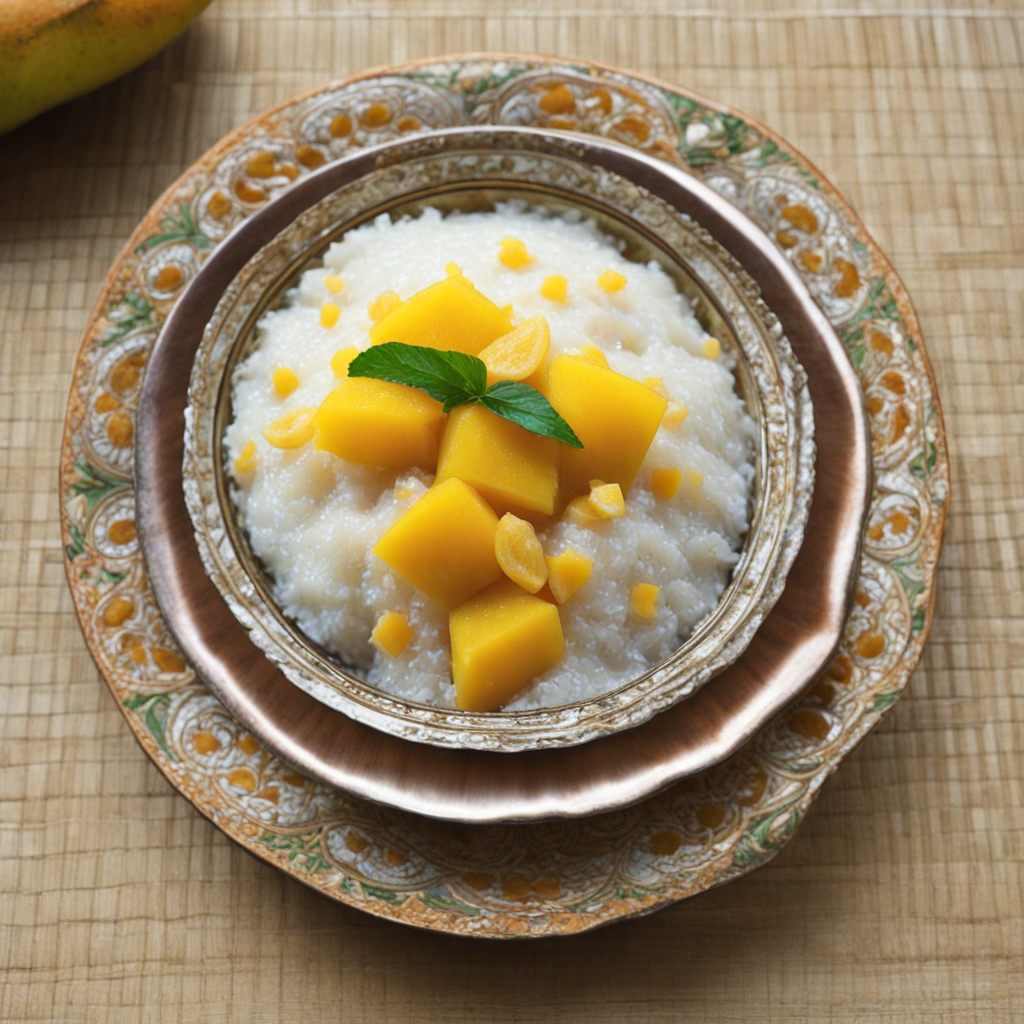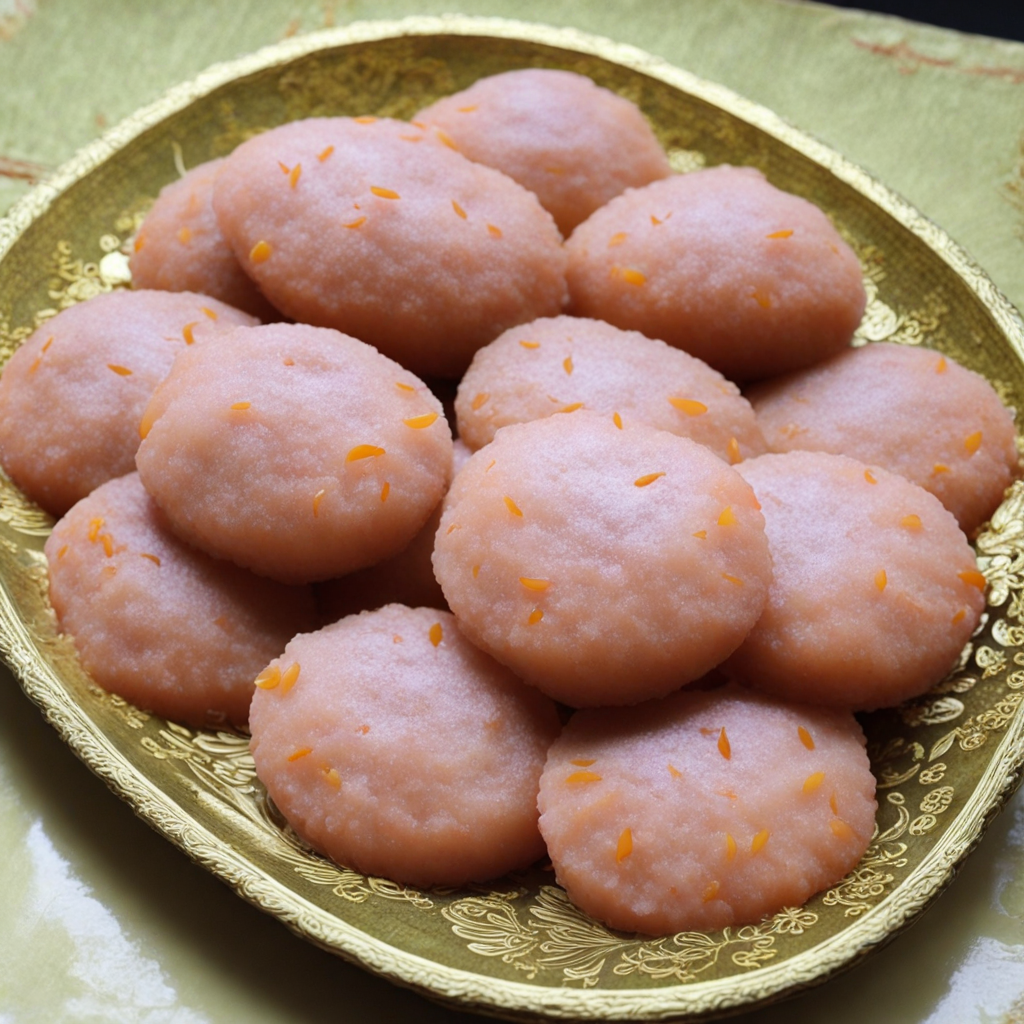Bhorta
Bhorta is a traditional Bangladeshi dish that encapsulates the essence of comfort food through its simplicity and rich flavors. Typically made from various vegetables or fish, the key to bhorta lies in its preparation method, which includes roasting, mashing, and seasoning. Common ingredients include eggplant, potatoes, or even fish like hilsa, which are combined with mustard oil, green chilies, and onions to create a smooth, creamy texture. The roasting process imparts a smoky flavor that enhances the overall taste, making it a delightful experience for anyone seeking a unique culinary adventure. One of the most popular variations is begun bhorta, made from roasted eggplant. The eggplant is charred until its skin is blistered, revealing a soft, velvety interior that is then mixed with finely chopped onions, garlic, and green chilies. The addition of mustard oil adds a distinct pungency that beautifully complements the natural sweetness of the eggplant. This dish is often served with steamed rice, making it a staple in many Bangladeshi households, where it is cherished for its hearty yet humble appeal. Bhorta is not just about flavor; it also reflects the cultural significance of communal eating in Bangladesh. It is typically enjoyed as part of a larger meal, accompanied by rice and other dishes, allowing for a harmonious blend of tastes and textures. The act of sharing bhorta among family and friends fosters a sense of togetherness, making it a beloved choice for gatherings and celebrations. With its rich flavors and cultural roots, bhorta is a dish that invites you to explore the warmth of Bangladeshi hospitality, one delicious bite at a time.
How It Became This Dish
Exploring the Rich History and Cultural Significance of ভর্তা (Bhorta) in Bangladesh In the vibrant culinary landscape of Bangladesh, few dishes encapsulate the essence of traditional cooking as beautifully as ভর্তা (Bhorta). This simple yet flavorful preparation has found its way into the hearts and homes of countless Bangladeshis, transcending mere sustenance to become a symbol of cultural identity and communal ties. The evolution of Bhorta is a testament to the region's agricultural bounty, historical influences, and the deep-seated connection between food and community. Origins of Bhorta The origins of Bhorta can be traced back to the agrarian society of Bengal, where fresh produce and locally sourced ingredients have always taken center stage. The term "Bhorta" itself derives from the Bengali word "Bhorta," meaning "to mash" or "to crush." Traditionally, this dish encompasses a wide array of mashed vegetables, legumes, and even fish or meat, seasoned with mustard oil, onions, and spices. The simplicity of Bhorta showcases the resourcefulness of Bengali cooks who have historically used whatever ingredients were available, transforming them into nourishing meals. The primary ingredients for Bhorta are often vegetables like eggplants, potatoes, and tomatoes, which flourish in the fertile plains of Bangladesh. The unpretentious nature of these ingredients reflects the agricultural practices of the region, where seasonal produce dictates the culinary repertoire. It is believed that the practice of mashing vegetables likely evolved out of a need to make the most of harvests and to create dishes that were easy to prepare and consume. Cultural Significance Bhorta holds a significant place in Bangladeshi culture, especially within the context of family and communal dining. It is not merely a side dish; rather, it is a beloved staple that accompanies rice, often served alongside lentil dishes (dal) and various meat curries. The act of sharing Bhorta during meals fosters a sense of togetherness, as families gather around the table to enjoy food that is steeped in tradition. Moreover, Bhorta is often prepared during festivals and special occasions, showcasing its role in communal celebrations. During events like Pohela Boishakh (Bengali New Year) and Eids, the preparation of Bhorta becomes a ritualistic affair, with family members coming together to create a variety of flavors and textures. Each household may have its unique twist on Bhorta, leading to a delightful diversity of recipes that reflect individual family histories and regional variations. In addition to its role in daily meals, Bhorta has also become a part of Bangladesh's cultural narrative. The dish is often featured in folk songs and literature, symbolizing the connection between food, land, and identity. For many, the taste of Bhorta evokes memories of childhood, family gatherings, and the warmth of home. Development Over Time As Bangladesh has evolved over the decades, so too has Bhorta. While the core principles of this dish remain rooted in tradition, modern influences have introduced new ingredients and variations. In urban areas, where global cuisine has made its mark, traditional Bhorta recipes are sometimes adapted to include contemporary flavors and ingredients, such as avocado or imported spices. Despite these changes, the essence of Bhorta as a comfort food remains unchanged. In fact, the dish has gained a new level of appreciation among younger generations who seek to reconnect with their culinary heritage. The rise of social media and food blogging has further popularized traditional dishes like Bhorta, allowing home cooks to share their recipes and stories with a wider audience. The globalization of food culture has also facilitated cross-cultural exchanges, enabling Bengali immigrants to introduce Bhorta to international audiences. In diaspora communities, Bhorta serves as a culinary bridge, fostering connections to their homeland while also allowing for creative reinterpretations that blend different culinary traditions. Varieties of Bhorta The beauty of Bhorta lies in its versatility. There are numerous varieties, each with its distinct flavor and preparation method. Some of the most popular Bhorta types include: 1. Beguni Bhorta (Eggplant Mash): Made from roasted or boiled eggplants, this Bhorta is often mixed with mustard oil, onions, and green chilies. The smoky flavor of the eggplant adds depth to the dish, making it a favorite accompaniment to rice. 2. Aloo Bhorta (Potato Mash): A comfort food classic, Aloo Bhorta involves mashing boiled potatoes with mustard oil, onions, and green chilies. Its creamy texture and mild flavor make it appealing to both children and adults. 3. Shobji Bhorta (Mixed Vegetable Mash): This variety combines different seasonal vegetables, such as pumpkin, radish, and spinach, creating a colorful and nutritious dish. The use of fresh herbs and spices enhances the flavors, making it a wholesome addition to any meal. 4. Macher Bhorta (Fish Mash): In coastal areas, Bhorta takes on a seafood twist with the inclusion of mashed fish, typically seasoned with mustard oil, onions, and spices. This variant reflects the coastal culture and the importance of fish in Bangladeshi cuisine. 5. Daal Bhorta (Lentil Mash): Prepared with boiled lentils, this Bhorta is often seasoned with onions, garlic, and spices, creating a protein-rich dish that is both satisfying and nutritious. Conclusion The journey of Bhorta through history is a reflection of Bangladesh's agricultural heritage, cultural values, and the resilience of its people. From humble beginnings as a means to utilize seasonal produce, Bhorta has evolved into a beloved dish that symbolizes the essence of Bangladeshi cuisine. It is a testament to the unity and warmth of communal dining, where food serves as a medium for connection and celebration. As Bangladesh continues to navigate the complexities of a modern world, Bhorta remains a cherished symbol of its rich culinary traditions. Through each mash and blend of flavors, it tells a story of heritage, identity, and the enduring power of food to bring people together. Whether enjoyed in a bustling household or shared among friends, Bhorta will undoubtedly continue to hold a special place in the hearts of many, preserving its legacy for generations to come.
You may like
Discover local flavors from Bangladesh


